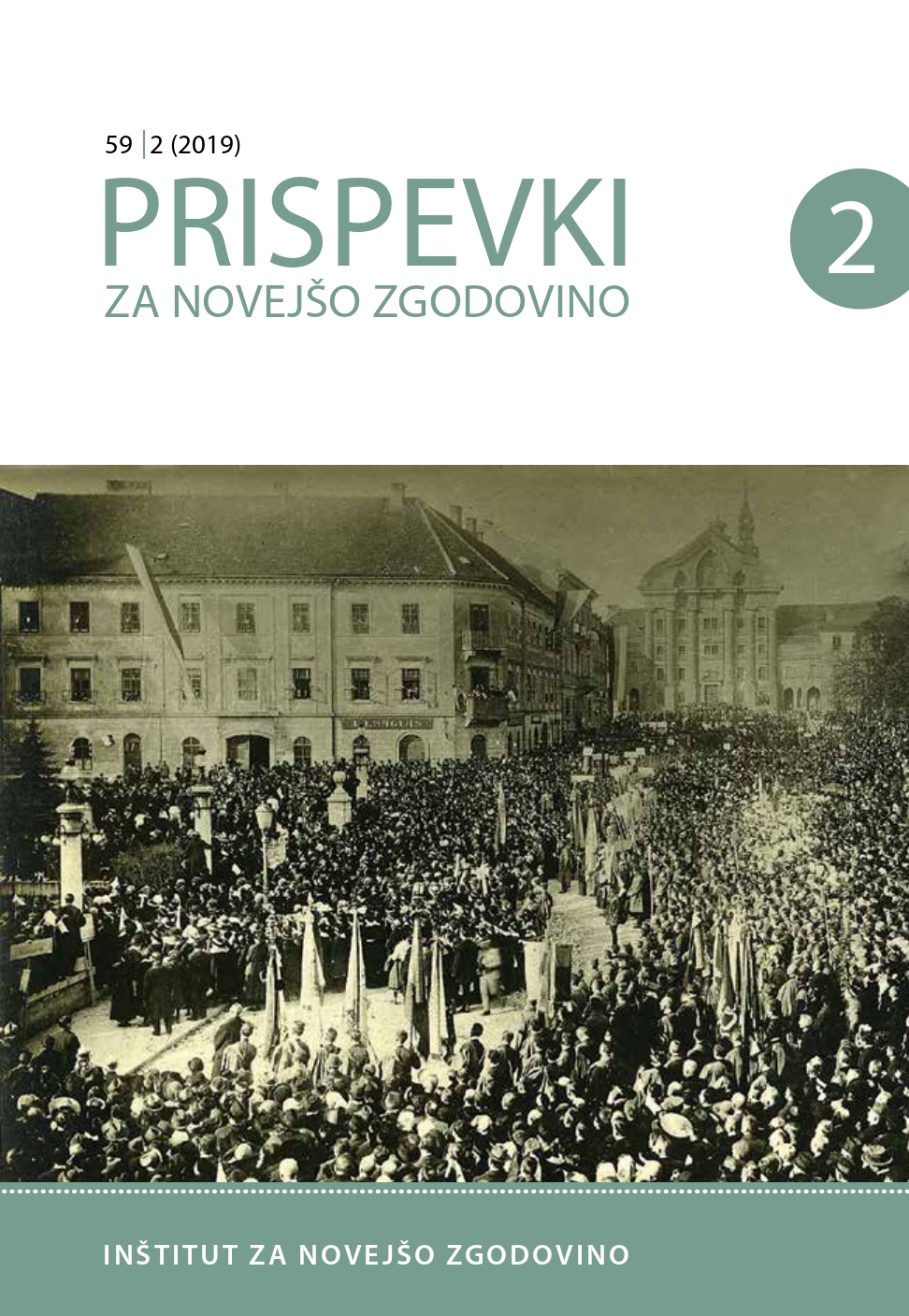Položaj Slovencev v Državi Slovencev, Hrvatov in Srbov
Slovenian Position in the State Of Slovenes, Croats and Serbs
Author(s): Jurij PerovšekSubject(s): Political history, Government/Political systems, Pre-WW I & WW I (1900 -1919), Inter-Ethnic Relations
Published by: Inštitut za novejšo zgodovino
Keywords: State of Slovenes; Croats and Serbs; SHS National Council in Zagreb; National Government of SHS in Ljubljana; the first Slovenian government; Government;
Summary/Abstract: The State of Slovenes, Croats and Serbs (the State of SHS), established on 29 October 1918, has an essential role in the Slovenian national development, as it represented the first time in contemporary history that Slovenians governed themselves. The first Slovenian government – the National Government of SHS in Ljubljana – was an element of such a national-political position. With the exception of foreign affairs, the National Government included all of the highest executive and administrative authorities. It was in charge of the scope of the national authority that the Slovenian independence in the State of SHS was based on. Initially, the National Government observed the powers withheld by the SHS National Council in Zagreb, the highest authority in the State of SHS (which was in charge of foreign and military affairs and had the right to pardon, annul legal acts, and appoint senior officials). Gradually, however, the National Government also started to assume authority in the areas previously under the jurisdiction of the SHS National Council. In the state-legal sense, this takeover of powers was implemented with the Government Decree on the Transitional Administration in the Territory of the National Government of SHS in Ljubljana, issued by the National Government in agreement with the SHS National Council on 21 November 1918. With this Decree, the SHS National Council empowered the National Government to govern Slovenia. The relations between the National Government and the SHS National Council, defined in such a manner, represented the foundations for the confederal ties of Slovenia with the State of SHS and its confederal statehood in the material-legal sense. In view of the Italian occupation of Trieste, the Goriška region, Istria, and the Postojna district in Carniola between 3 and 23 November 1918 as well as due to the fact that the Prekmurje region still belonged to Hungary at the time, the Slovenian territory, where the National Government was effectively in power and which it brought together into a state-legal unit, encompassed the majority of the former Duchy of Carniola and the Slovenian part of the former Duchy of Styria (until the demarcation line with the German Austria around Radgona, Šentilj, and Kozjak) as well as the territory south of the rivers Zilja, Drava and the district of Völkermarkt in Carinthia. With the exception of the stated part of Carinthia, this accounted for approximately two thirds of the today’s territory of the Republic of Slovenia. The Slovenian state-legal subjectivity, achieved in the State of SHS, was lost after its unification with the Kingdom of Serbia to establish the Kingdom of Serbs, Croats and Slovenes on 1 December 1918.
Journal: Prispevki za novejšo zgodovino (before 1960: Prispevki za zgodovino delavskega gibanja)
- Issue Year: 59/2019
- Issue No: 2
- Page Range: 40-74
- Page Count: 35
- Language: Slovenian

